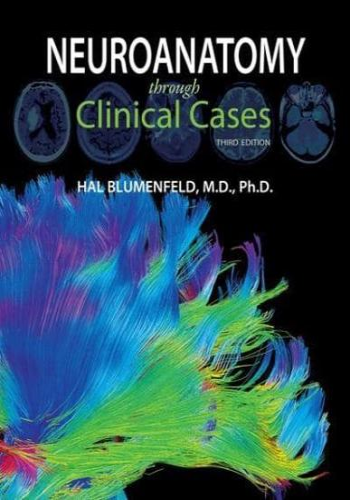Chapter 1: Introduction to Neuroanatomy and Clinical Cases
Summary:
Provides an overview of neuroanatomy and its clinical relevance. Explains the different sections of the nervous system (brain, spinal cord, peripheral nerves) and their functions. Emphasizes the importance of understanding neuroanatomy for effective diagnosis and treatment of neurological disorders.
Real Example:
A patient presents with difficulty speaking and understanding language. Neuroanatomy helps localize the lesion to the left hemisphere of the brain, specifically Broca's area and Wernicke's area, which are responsible for speech production and comprehension, respectively.
Chapter 2: The Cerebrum
Summary:
Describes the structure and function of the cerebrum, including the cerebral hemispheres, lobes, and major sulci and gyri. Highlights the specific roles of the different cortical areas in cognitive, motor, and sensory functions.
Real Example:
A patient experiences visual field defects. Neuroanatomy reveals that the lesion affects the occipital lobe, particularly the primary visual cortex, which is responsible for processing visual information.
Chapter 3: The Cerebellum and Brainstem
Summary:
Discusses the anatomy and function of the cerebellum and brainstem. Explains the cerebellum's role in coordination, balance, and motor learning. Describes the various structures of the brainstem, including the medulla oblongata, pons, and midbrain, and their vital functions.
Real Example:
A patient has difficulty swallowing and breathing. Neuroanatomy suggests a lesion affecting the medulla oblongata, which controls the respiratory center and the nuclei for swallowing.
Chapter 4: The Spinal Cord
Summary:
Provides a detailed account of the spinal cord, its structure, and its organization into segments. Explains the spinal cord's function in transmitting sensory and motor information to and from the brain.
Real Example:
A patient experiences weakness in one leg and difficulty walking. Neuroanatomy indicates a lesion in the spinal cord that affects the motor neurons supplying that leg.
Chapter 5: The Peripheral Nervous System
Summary:
Describes the peripheral nervous system, including the cranial nerves, spinal nerves, and peripheral ganglia. Explains the sensory and motor functions of the different nerves and their role in innervating various body regions.
Real Example:
A patient complains of numbness and tingling in the hand. Neuroanatomy suggests a lesion involving the median nerve, which supplies sensory innervation to the palm and fingers.
Chapter 6: Neurovascular Relationships
Summary:
Explores the close relationship between the nervous system and the vascular system. Discusses the brain's intricate blood supply and the consequences of vascular compromise.
Real Example:
A patient suffers a stroke. Neuroanatomy helps understand the location of the infarction and the specific brain areas that have been affected, based on the vascular territory involved.
Chapter 7: Neurological Examination
Summary:
Outlines a comprehensive neurological examination, including assessment of motor function, sensory function, reflexes, and cranial nerves. Explains the significance of each test and its relevance in diagnosing neurological disorders.
Real Example:
A patient with suspected Parkinson's disease undergoes a neurological examination that includes assessment of rigidity, bradykinesia, and tremors, all of which are characteristic features of the disorder.







